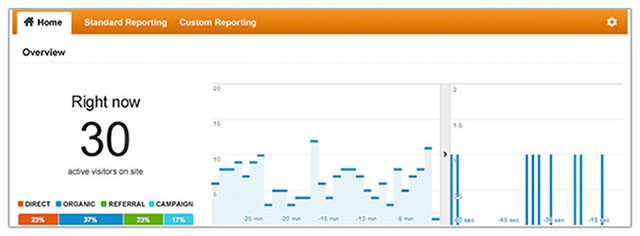“You can’t manage what you can’t measure”, that’s what they said.
It holds true when it comes to content marketing. You will need to know how your contents are performing, you will need to know how much your readers love your content. You will need all these data to further improve your content strategies.
So today we will be introducing you an awesome free tool to measure all of these.

Google analytics is one of the most valuable tool for you as a webmaster. We highly recommend it. It’s free and it’s valuable.
GA as we call it, tells you where your web visitors are coming from, how long the spend on your site, which pages they visit and so on. Don’t you always wanted to know that? Kind of like going after the visitors browsing through your store to make sure they don’t steal anything. (No, in a real store, please don’t do that.)
There is always a tradeoff with free awesome stuff like this. And in this case, that’s the fact that you are letting Google know everything about your website visitors and their behavioral patterns.
For most webmasters, it does not mean anything. But let’s just jump right in. Here are the steps you can do to install Google Analytics (GA) properly.
For wordpress users: To to wordpress plugin directory and search for Google Analytics, you will probably find a lot of plugins that lets you easily enable Google Analytics feature on your site. Just install it and copy and paste your Google analytics ID and you are good to go. The GA ID is a unique alphanumeric code that is different for each web property you have. It usually has the format UA-XXXXX-Y or UA-XXXXX-YY.
For some, GA can be intimidating because of the vast amount of data that GA presents to you. For most, 90% of the data will not matter. We are going to see the remaining 10% that matter.
This is one analytic part that everyone will look at and have no trouble finding out. Yes, we need to know where the traffic is coming from. GA classifies traffic sources based three major factors mainly Search Engine Optimization, Referral (any other sites), Search Traffic (Paid Google Ads).
Another feature of GA is that, it will tell you what percentage of your traffic is returning visitors and what percentage of them is new visitors.
Bounce rate shows the percentage of users that comes to a page and leaves immediately without clicking any other page of your website. Why would anyone come to your beautiful, informative and user-friendly site and leave without even clicking on any other page?
That’s what you need to figure out.
If the person is coming to your site via an AD you did, and he/she bounced, that means, the AD was misleading. Something in the AD, made the user misunderstand what you were offering and when they click through and come to your site, they will be disappointed and leave. If you are advertising based on keywords, then probably, the keywords you picked were not the exact ones your target market was looking for.
Another reason could be because there was a problem with your site. Maybe there is no call-to-action on your landing page. Or the website is too slow and visitors leave. Or just plain, you may be having the wrong message on the page.
Make sure, you be creative on your landing page and let the user know where to go to get to the main attractions on your site.
If you are running an ecommerce website or you have any kind of sign-up forms on your website, then you should measure the conversion rate. The conversion rate simply means how many users who visited a particular page proceeded to do what they were told to do. (Sign up or buy something).
Goals are similar to Conversions, but it’s a little different in a sense that you can measure just about anything with goals. Goals can be the following:
No doubt, Google Analytics is a fantastic tool and every website owner like you, should make use of it. After all, what excuse can you give for not utilizing a free tool like this?